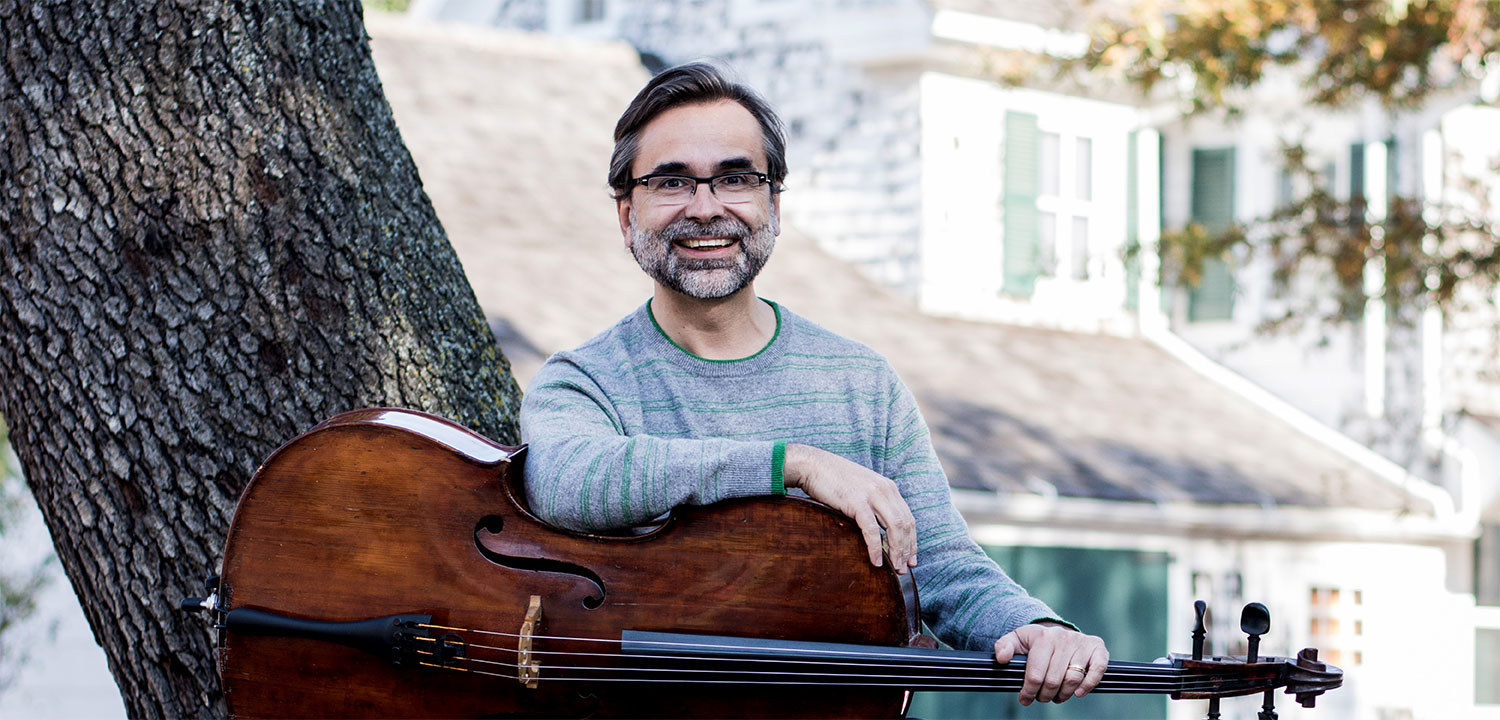Internationally renowned cellist Ovidiu Marinescu is joined by pianist Igor Resnianski and violinist Timothy Schwarz to perform Beethoven’s masterful Triple Concerto and the HSO brings tragedy to triumph with the emotionally overwhelming Symphony No. 5 by Mahler.
Masterworks III is presented with thanks to AARP Montana, Epiphany Dermatology, Flying S Title & Escrow, and the Best Western Premiere Great Northern Hotel
Beethoven’s Triple
“Beethoven’s main motivation for writing a concerto for violin, cello, and piano seems to have been to give his student, Rudolph, Archduke of Austria, (late the Archbishop Cardinal of Austria), an opportunity to perform,” explains Maestro Allan R. Scott. “Beethoven tailored the solo piano part to Rudolph’s skills so that it did not present extremely difficult technical demands but still featured the piano to complement the enormously difficult violin and cello solos.” Composing under the powerful influence of French composers, Beethoven built his concept of the Triple Concerto from sinfonia concertante which was a popular idiom heard in French music where two soloists were featured with some orchestral accompaniment.
“The most daunting task for any concerto is how to allow the orchestra and the soloist to each introduce themes and expand on them, so to set a concerto for three soloists poses the practical problem of how to give each soloist sufficient exposure while keeping the work within a manageable time frame,” says Maestro Scott. “If absolute equality were the goal, it would demand that every theme be played four times – once by the orchestra and once by each of the three soloists. The other potential issue was the challenge of how to prevent the piano from overpowering the violin and cello. To solve the problem, Beethoven devised simple and compact themes comprising basic chord and scale patterns where the piano plays the lightest passages and the cello serves as the main voice, especially the powerful top register. The end result is a concerto that is not rich in length, expressive melodies and maybe not even a work of intense emotional heights, but a work with wonderfully contrasting sonorities and a brilliant interplay between soloists and orchestra.”
Mahler’s Fifth
The genesis of Mahler’s Fifth Symphony goes back to the spring of 1901. After securing the services of Bruno Walter as his assistant conductor (and later renowned interpreter of Mahler’s music), Mahler was able to take leave for the summer from the Vienna Opera. As his summer vacation ended and after much procrastination, Mahler composed the initial drafts of the first two movements of his Fifth Symphony. It was to be another two years before Mahler completed the orchestration and felt satisfied with the first part of the work.
During the 1904-1905 concert season, Mahler premiered the Fifth Symphony in Cologne. While Mahler’s preparations for the first performance were exacting as usual and while the orchestra performed admirably, Mahler realized the work had several defects and decided the Symphony needed several revisions. It was not until three months before his death in 1911 that he finally completed the version of the work that is performed today.
“Along with the Sixth and Seventh, the Fifth Symphony focuses on virtuosic orchestra playing, counterpoint, and less on ‘programmatic’ material,” explains Maestro Scott. “Yet with the Fifth Symphony and its progression of moods and emotions, it clearly possesses an inner program even if Mahler did not specifically give one. The most telling aspect that the work has some programmatic content is in the clear arrangement of the five movements into three parts, over the course of which the music moves from negative emotions towards positive ones.”
Conductor/Composer Leonard Bernstein said Mahler’s marches “are like heart attacks and his chorales like all Christendom gone mad.” Mahler’s Fifth Symphony opens with a funeral march led by a lone trumpet that immediately calls the audience to attention, demanding to be heard, yet soul-searching as well. “What follows is some of the most frightening music Mahler ever wrote, as the orchestra answers the trumpet’s despair complete with horns wailing and symphonic outbursts,” says Maestro Scott. “A more contemplative theme is interspersed with the chaos and the movement becomes somewhat cyclical, but a cycle of sorrow. Like the opening trumpet fanfare, Mahler assigns the military-like theme to other instruments as well, as music bursts upon the scene in great waves of intensity. The rhythm is unwavering and unrelenting, and ultimately intensity turns to lamenting and the movement collapses on itself as the opening theme returns completely sapped of all its energy leaving the movement to simply fade away closing with a loud snap from the strings.”
Masterworks Series presented by AARP Montana
The Helena Symphony continues our partnership with AARP to bring exceptional symphonic music to thousands across western Montana. As the Masterworks Series presented by AARP Montana, this continued collaboration will support audiences within the concert hall, bringing the highest quality symphonic performances and guest artists to Helena. The Helena Symphony is grateful for the generosity of the entire AARP Montana team!
Other Season highlights include a double feature of opera and ballet with Cavalleria Rusticana and Tchaikovsky’s Swan Lake and two additional Montana premieres, All Seeing Sky by John Psathas and Alexander Scriabin’s Poem of Ecstasy. Season 69 also includes several free Educational Concerts, a black-tie Masquerade, and much more!
Tickets for the remaining Masterworks concerts are available as a mini subscription package at a substantial discount. In addition to the discounts on season tickets, subscribers also receive the new Bring A Friend Pass, The Art of Listening Newsletter, first access to Non-Series Concerts, and several other benefits. Single concert tickets can also be purchased ($65-$20 plus a $5 transaction fee) online at www.helenasymphony.org, by calling the Symphony Box Office (406.442.1860), or visiting the Symphony Box Office located on the Walking Mall at the Placer Building (21 N. Last Chance Gulch, Suite 100) between 10 a.m. and 4 p.m.

